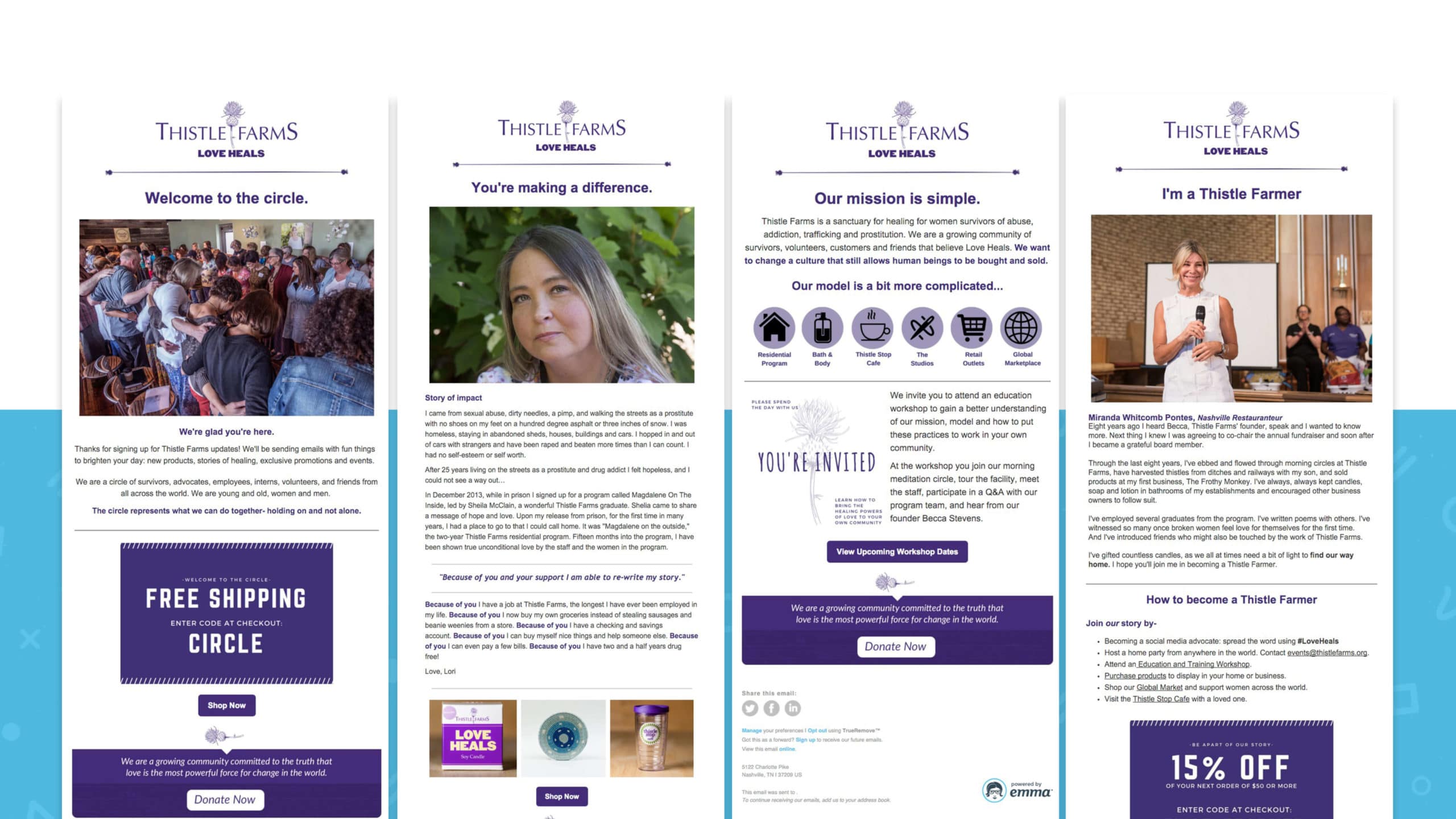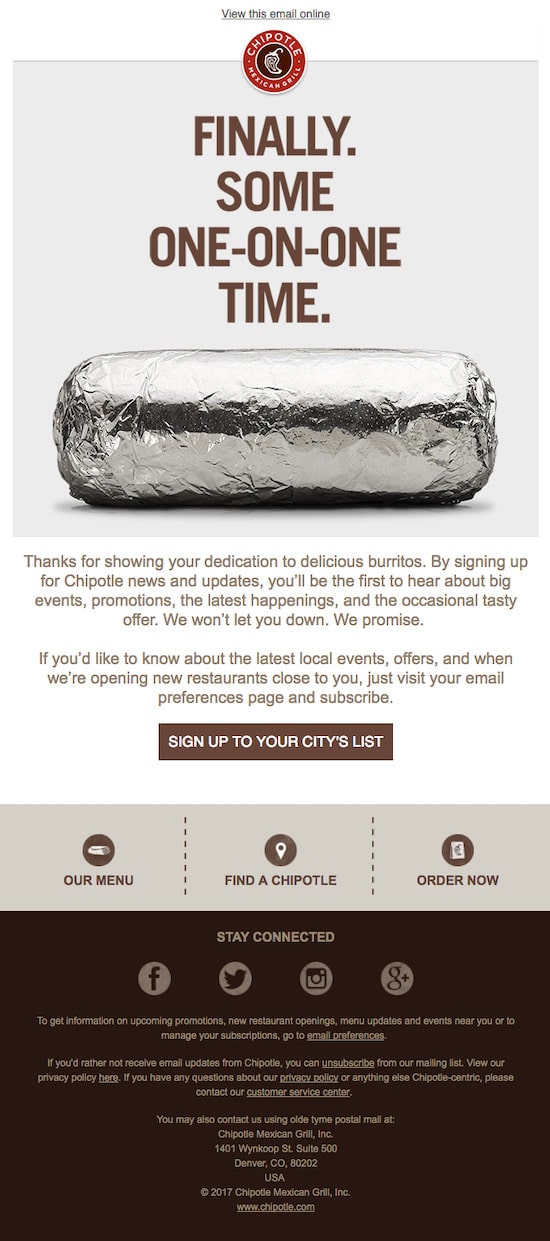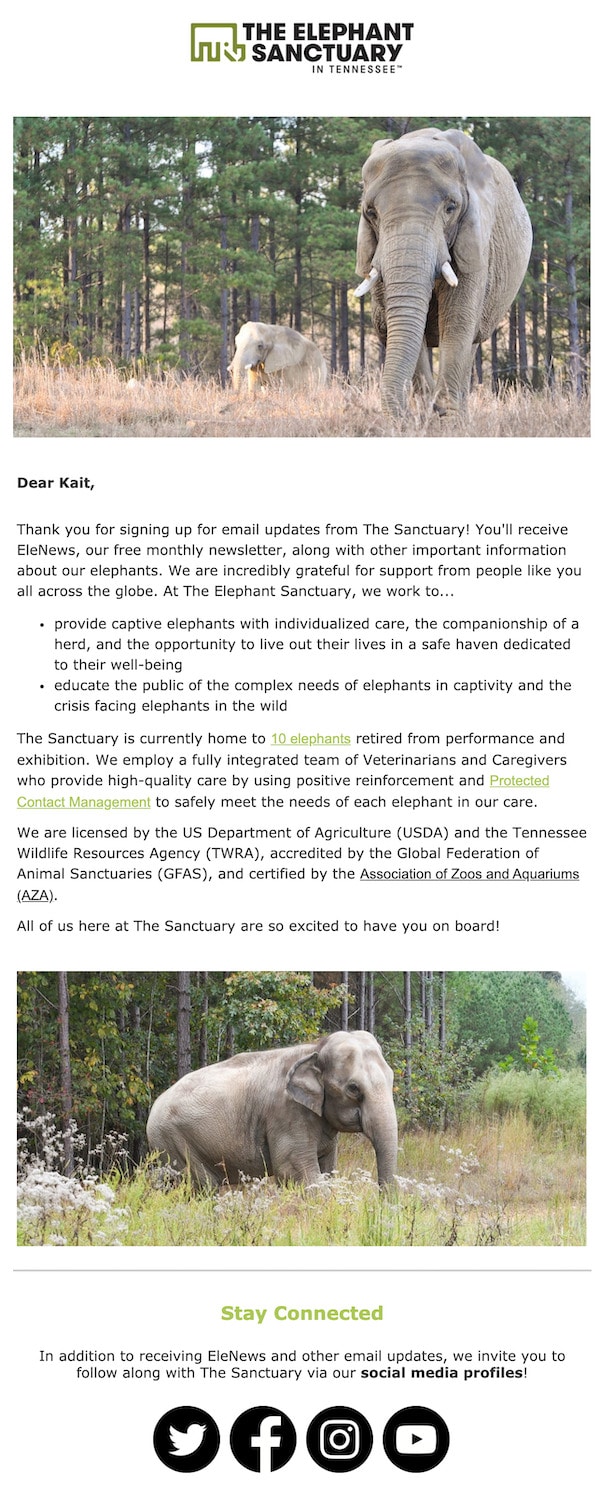The value of an automated email welcome series
When you’re visiting a new site and you sign up for an email list, what’s the first thing you do? You likely switch to your inbox tab and wait for an email—a verification that the action you took registered.
But there’s more to that first email than just a verification. At least, there should be if the marketing’s done right. Welcome emails are designed to be sent to new subscribers automatically. They should serve as an introduction for new readers and customers, allowing them to get familiar with your brand.
In this article, we’ll discuss what makes a great welcome email series and how you can send welcome autoresponders using the Emma platform. But first, why do you really need to send subscribers welcome emails?
Why send welcome emails to your subscribers?
Receiving a welcome email isn’t just about getting acquainted with a brand.
For instance, have you ever received an email immediately after subscribing for a newsletter or purchasing an item, and then you found yourself back on the website? In some cases, you might have even bought (another) item. If so, you’re not alone: Welcome autoresponders are meant to garner traffic, and they work well among subscribers.
In fact, welcome emails enjoy a 91.43% open rate, which is nearly four times more than standard email marketing content. More opens mean more engagement, more clicks, and better conversions. With our email marketing automation, you can send immediate welcome emails, complete with real-time reporting.
That said, creating your own compelling welcome email may not seem so easy, so let’s look at examples that will help you create beautiful welcome emails of your own.
Should you send a welcome email or a welcome series?
We’ve discussed why sending a welcome autoresponder is important, so now the question is—how many do you send? Is one enough, or should it be part of a series? Ultimately, it depends on your brand.
You might send a singular welcome email if your brand can be succinctly described. For instance, this autoresponder from Studio DIY quickly provides a sense of the brand, how to get in touch, and a discount code so subscribers can start shopping.
Source: Studio DIY
On the other hand, your brand may have a lot of information to cover, such as product information, an explanation of the brand’s mission, or specific features.
Emma customer Thistle Farms initially set up this 4-part welcome series. It offered new subscribers an introduction, explained the mission and brand, and provided testimonials.
But instead of stopping there, Thistle Farms continued to test the welcome series, using email analytics. With reporting through the Emma platform, they realized engagement actually began to taper off during the third and fourth emails, so they downsized their welcome series to two emails. These two emails still provide a journey for new subscribers (but a more succinct one).
Make it personal
How can you get creative and personal with your introductory emails? The team at Chipotle could easily send a standard welcome message, but the example below has a friendly, quirky personality. Here’s the welcome email you receive when you sign up for their mailing list:
Source: Really Good Emails
This email emphasizes the connection Chipotle wants to have with their subscribers (the hope being, when you think of Chipotle, you’ll think of a burrito tailored to your tastes). But the welcome email goes even further, providing subscribers with the option to sign up for their city’s list. This extra step makes this autoresponder especially personalized, because subscribers can get localized results.
Localization isn’t the only way to add a personal touch to your emails, though. There are numerous ways to make your content more dynamic. You can use your welcome email to encourage subscribers to visit the email preference center, where they can give you more information about the emails they want to receive.
You can then use this information to provide hyper-personalized messages, with segmented lists and triggered email content. And since your subscribers can tell you what content they want to receive, you’ll ideally have a more engaged list moving forward.
Make it automatic
As you saw with Thistle Farms, autoresponders don’t have to come exclusively from blogs or corporations: In fact, they’re just as effective for local organizations and nonprofits, with email offering a way for organizations to develop their donor-base and expand their reach.
We’ve experienced this within our own nonprofit community as well. Emma’s customer, The Elephant Sanctuary in Tennessee, sends an automated email after someone signs up to their email list.
This email personalizes the send name and provides expectations for the type of content subscribers will receive—along with the newsletter cadence. New subscribers can quickly learn about the organization’s mission and click through to various landing pages and social accounts, expanding their interaction with the brand.
Source: The Elephant Sanctuary in Tennessee
By providing automatic updates to subscribers, people can remain knowledgeable about this local cause. And in the event the organization needs donations or volunteers, they already have a list of engaged subscribers to lean on.
How to create a welcome email series in Emma
We’ve covered why welcome autoresponders are positive for your organization, but how do you go about creating them?
Emma makes building and sending welcome emails easy. But don’t take it from us—experience it firsthand in our welcome series video. You can learn more about our process below.
Automated emails, sometimes known as drip campaigns, are triggered to automatically send. Because they can be scheduled to respond to specific events and behaviors, such as someone signing up to your list, they can generate high open and click rates. This saves you time having to manually create and schedule email campaigns. To set up an automation, navigate to the Automation tab in the Emma platform.
You'll see a list of live and draft workflows with the option to create a new one. Let's create a new workflow that will send an email anytime someone signs up to our monthly newsletter.
Name your workflow and select Audience to determine which of your groups or segments should be associated with it. Since we want to send a welcome email to anyone who completes our newsletter signup form, we want to keep the audience to Any contact.
Next, we want to choose what event triggers the workflow. We'll choose Email signup to trigger this automation when someone signs up through our monthly newsletter form. Now that we've defined the criteria for workflow, we can add actions. We don't want to keep our new subscribers waiting.
So, we're going to schedule an email to go out as soon as someone signs up. Choose a template and give your email a new subject line. If you want to send a follow-up email after the first one, add a wait step for two days, then add another mailing to your workflow.
Add as many campaigns as you think are relevant to your organization, as well as the source of the workflow. For example, a welcome series to a new customer may need more resources over a longer period of time than someone simply signing up for a newsletter. Once you've built out all of your workflow, you can switch it from inactive to active and click Save to start sending your campaigns.
Interested in learning more? Get all the details about what Emma can do for you: Talk to one of our experts.
Related articles
MOST RECENT ARTICLES
Want to engage your audience and grow your brand? Try Emma's robust easy-to-use product today.


















